Fins are one of the most crucial pieces of equipment when it comes to optimising the diving experience. For the experienced diver, fins quickly become the first object of attachment. I know myself that I would almost rather not dive if I could not do so with my favourite pair of fins. Good fins provide the diver with a range of benefits and are paramount in making the dive experience both as comfortable and as safe as possible. Hopefully, by reading our article, you can pick the best scuba diving fin based on your personal needs as a diver, as well as what type of fin you want from our product recommendations.
Best Scuba Fins Reviewed
#1 – Apeks RK3 Review (Best All-Rounder)
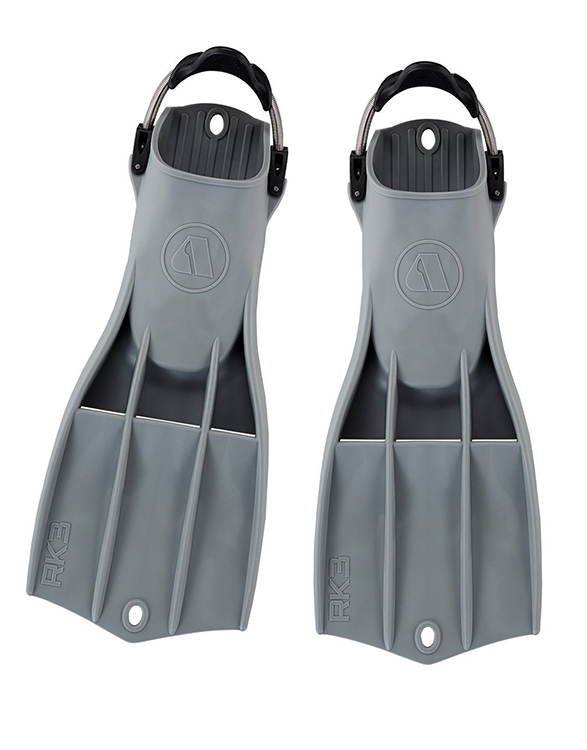
One of the most popular pairs of fins on the market, the Apeks RK3 fins are a perfect all-rounder, for all types of diving and divers. They are made of a very tough thermoplastic, and are positively buoyant. Their inherent buoyancy is a great benefit for many wetsuit divers, as it brings the legs into a well-trimmed position without the diver having to consciously do so with lower back tensing. Equally, for drysuit divers wanting a heavier fin, Apeks released an updated version called the Apeks RK3 HD fins, which are negatively buoyant. The vents on the blades make for less resistance on the up-stroke, similar to that of a split fin, but without the loss in power. They come in three sizes: medium, large and super, and are between 1.1-1.4kg per fin, size dependent. These make for a perfect set of fins, be it for the first time diver, or the experienced technical diver.
#2 – Mares Avanti Quattro Review (Best All-Rounder #2)
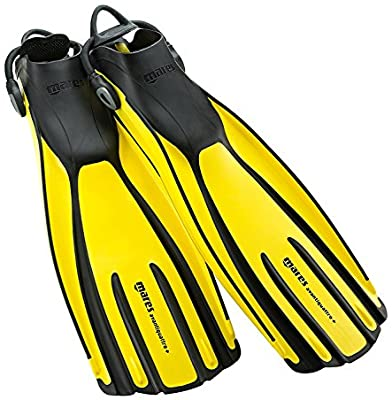
The Mares Avanti Quattro fin is held dearly to the hearts of many divers. They are again an all-rounder, as they possess the precision and power required by overhead and technical divers, whilst not being so stiff as to put off new, recreational divers. The only drawback is their length, as it slightly reduces control and is also a problem for the travelling, size conscious diver.
#3 – Scubapro Jet Scuba Fins Review (Best for Power and Control)
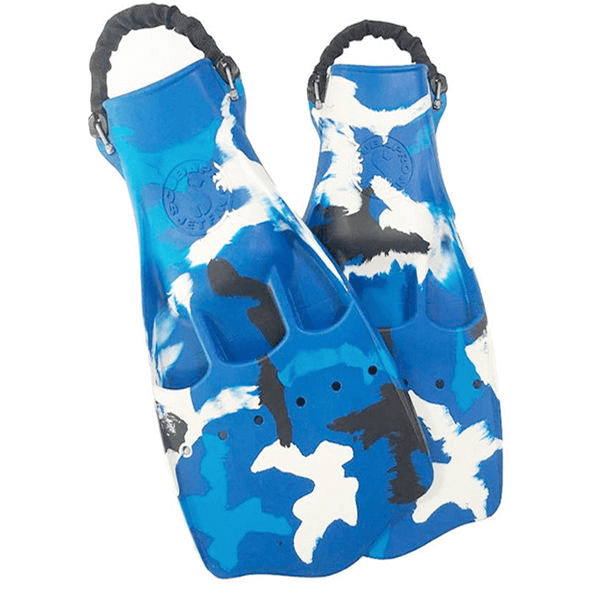
The Scubapro Jetfin is a classic scuba fin based on a very simple, original, and effective design. They are short and wide, with a very stiff blade, resulting in maximum power and maneuverability. They are extremely tough, and, in many cases, will last the diver their whole diving career. They are utilised by the most demanding divers, from North Sea saturation divers to military divers. They are negatively buoyant, making them the perfect fin for drysuit use. They also come in a range of colours and camouflage prints, making them very recognisable and personalised. They are available in sizes M, L, XL, 2XL, and 3XL. The only downside of these fins is their increased weight, which may pose a problem when travelling. However, many divers use and travel with these fins, regardless of their additional weight, due to their outstanding performance. The Scubapro Jetfin is the original jetfin that spawned all the others.
#4 – OMS Slipstream (Best for the Traveller)
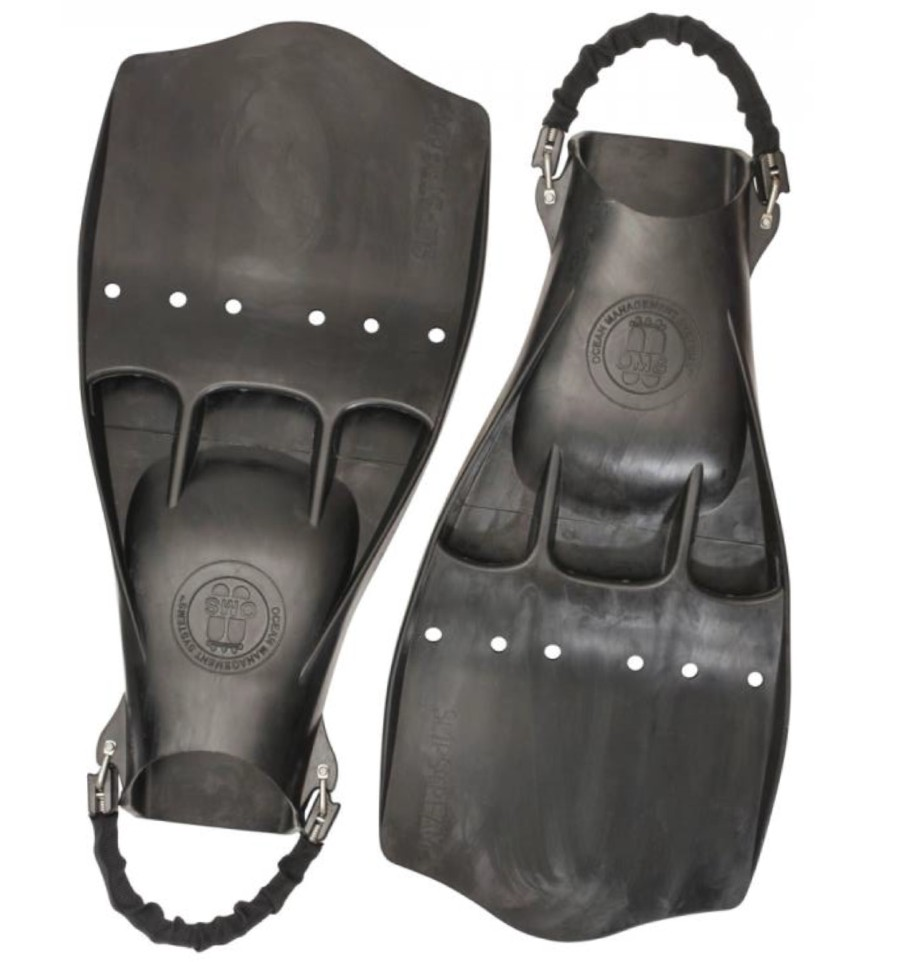
The OMS Slipstream’s are a fin modelled on the classic jetfin design, but are made from a lighter monoprene material. The result is that they are better for travelling, and are also neutrally buoyant, making them better for divers suffering from excess negative or positive buoyancy with their current set of fins. These are an excellent choice, and can be used in the most demanding of conditions. They are also a good choice for warm water sidemount divers who require a lighter fin with the same power and control of a traditional, heavier jetfin.
#5 – Scubapro Go Travel Fins (Best for the Cost-Effective Traveller)
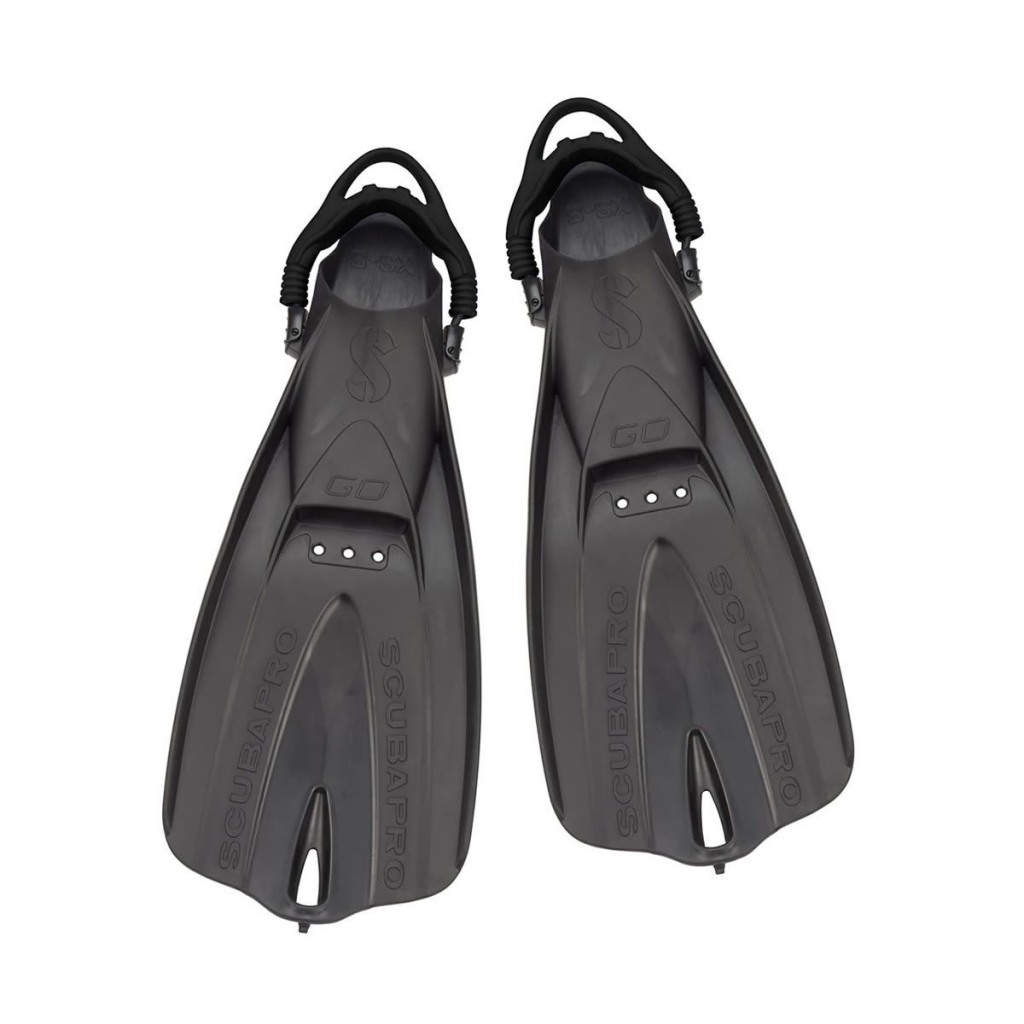
The Scubapro Go Travel fin is a fin designed for the traveller, and is also much more affordable than other pairs. Weighing in at a mere 0.6kg per fin, these are ideal for travelling. However, durability is not compromised, as they are made of 100% monoprene. They are also able to be worn barefoot if used for snorkelling too, but can also be worn with a neoprene sock or boot. The simple bungee strap, as with traditional jetfin designs, makes for extremely easy donning and doffing.
#6 – Atomic Aquatic Split Fin (Best for the Adaptive Diver)
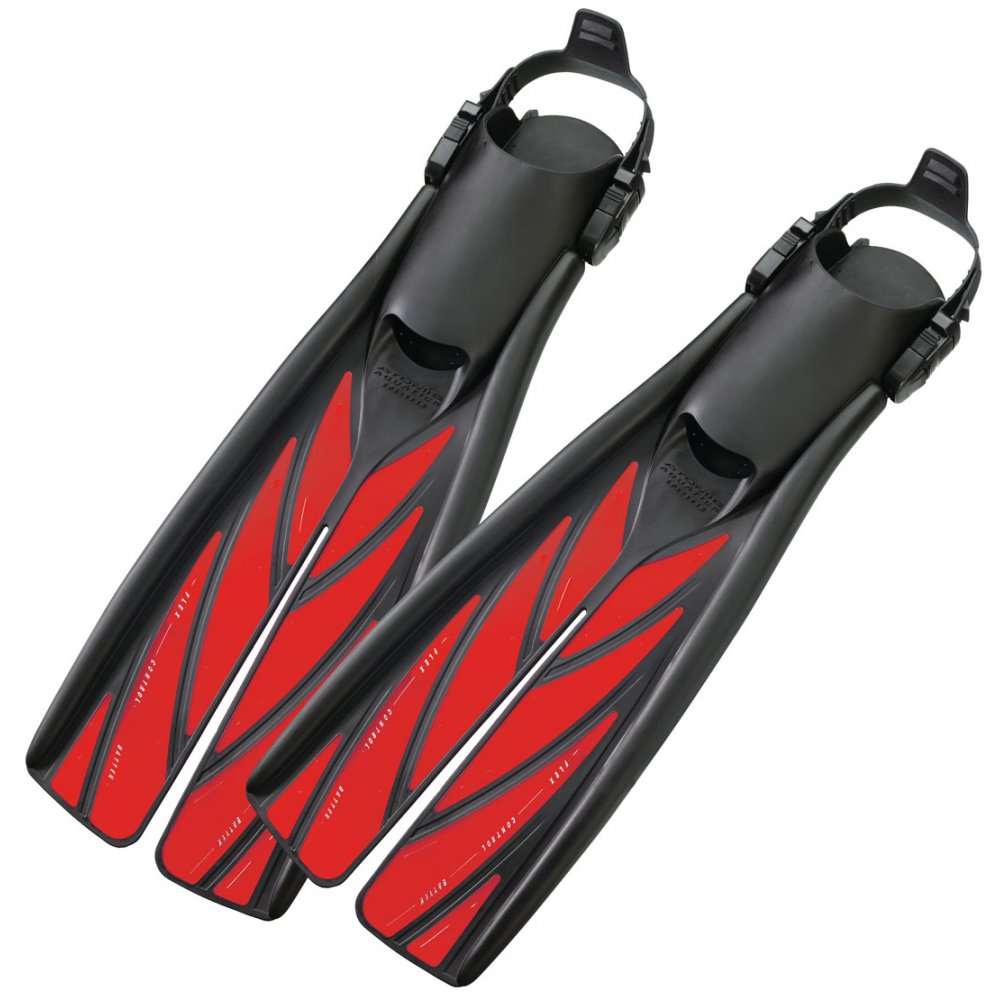
The Atomic Split scuba fin is an alternative option for divers who suffer from decreased leg strength and/or issues relating to mobility. The split fin design, whilst not optimum for power or fine motor control, makes for a very easy finning experience in calm conditions. Similarly, they are a good option for junior divers who require a fin that is less stiff and more flexible. However, for the diver wanting optimum power and finning control, split fins are not the fins to go for.
Picking The Best Scuba Diving Fin
The Basics
Unlike other pieces of dive equipment, fins are relatively simple. Factors to consider in terms of the construction of a fin are: blade length and width, closed heel versus open heel design, heel strap design, stiffness, and weight. There are two main designs of fins: paddle/jet fins and split fins.
Paddle/Jet Fins
The paddle design of scuba fins is the classic design that was originally used during the advent of diving. It utilises a short, wide, stiff blade, with a thick body, and is very durable. The shorter and wider a fin is, the more power and fine maneuverability it delivers. Therefore, paddle fins possess the greatest power and fine in-water control. These are the most ideal pair of fins to invest in for the majority of divers. The quintessential paddle fin design is that of the jet fin: this is a simple, effective construction that has barely changed since its initial birth.
Split Fin
The second type of fin design is the split-fin. The split fin blade is split in two, hence the name, making for reduced resistance, increased flexibility, and less stiffness. This is ideal for divers suffering problems of leg strength and/or issues relating to leg mobility. Split fins, however, sacrifice power and in-water control for flexibility and comfort. They are not the fins for those diving in currents, overhead environments or for technical divers. The use of split fins in any of these environments would pose a serious safety risk due to the lack of control and power they afford the diver. But, in calm conditions, performing normal recreational dives, they are a good option for those who struggle with the stiffness of a paddle fin.
Closed Heel vs Open Heel
Scuba diving fins also come with the option of having a closed heel versus an open heel. Closed heel designs, in almost all cases, are for fins designed for surface swimming and snorkelling, or freediving – even if they are marketed for scuba diving. The blade design is typically very weak (unless they are freediving fins), lacks precision and is generally unsuitable to the demands of scuba diving. Similarly, closed heel designs preclude the use of neoprene boots, therefore meaning they can only be used with bare feet – limiting the environments you can use them in. Open heel fins, on the other hand, can be used in all environments and are used by fins designed specifically for the demands of scuba diving. Therefore, you should always select a pair of fins utilising the open heel design.
Spring Bungee Straps vs Plastic Strap with Clips
In terms of the heel strap, there are two main designs: spring bungee straps versus a plastic strap with clips. Both designs work well. However, the single strap bungee design tends to be preferred by divers, as the donning and doffing process is made easier, and the strap itself does not require tightening: the bungee is naturally tight. Similarly, as the plastic strap has clips at both ends, it can easily be lost if both are unclipped in the water when doffing. Some divers actually have constructed their own bungee straps and replaced them with the plastic clip system on fins which don’t offer a bungee system.
The Importance of Good Fins
A pair of good scuba fins provides the diver with increased kicking efficiency. The key is in finding a fin that plays to your strengths. If you are a diver for whom the frog kick is your primary kick, then a paddle/jetfin style fin will be the best choice. Conversely, if leg strength and/or mobility is an issue, then a fin which is less stiff is a better choice, as comfort is of primary importance. With increased kicking efficiency comes less exertion. This means that the diver will require comparatively less oxygen and will therefore have a lower breathing rate, resulting in better overall gas consumption throughout the dive. Less exertion also means less chance for carbon dioxide (CO2) retention. CO2 is the by-product of respiration. Less exertion results in less respiration, and therefore less CO2 build-up. Reduced CO2 retention is a very important factor for safe diving as CO2 becomes very narcotic at comparatively lower levels, and has also been shown to increase the likelihood of central nervous system oxygen toxicity.
Scuba Fins also play a vital role in determining in-water control. A good fin will respond to the subtleties of variation in ankle and foot motion; it should perform well in modified variations of the frog and flutter kick, as well as with the reverse kick and helicopter turns. Good in-water control ties in with the previous point, as it reduces exertion. It also decreases the likelihood that a diver will come into contact with corals or any other delicate part of the underwater environment, making for more sustainable diving. In-water control and precision is essential for more advanced types of diving, such as cave and wreck diving, as it is the difference between visibility or a silt-out. Similarly, in technical diving, in-water control is vital in order for decompression stop depth to be held consistently.
Fins and Trim
Often, scuba fins are talked about purely from the perspective of propulsion. However, scuba fins are not merely a means of propulsion; they are an integral part of whole-body trim. Fins themselves have different buoyancy characteristics; some are negative, some positive, others neutral. The diver is essentially a seesaw in the water. With this in mind, the buoyancy characteristics of a diver’s fins are going to have one of the greatest impacts on their trim, as the feet are the furthest away from the centre of the diver.
An intelligent thing to do before buying a new pair of scuba fins is to examine your trim position in the water. This can be done by performing a simple in-water trim check, as shown below. Whilst hovering, you want to extend both your arms and legs, so that your whole body is almost perfectly horizontal in the water column. Then, simply relax in this position, releasing bodily tension, and allow your body to move in the direction it naturally moves in.
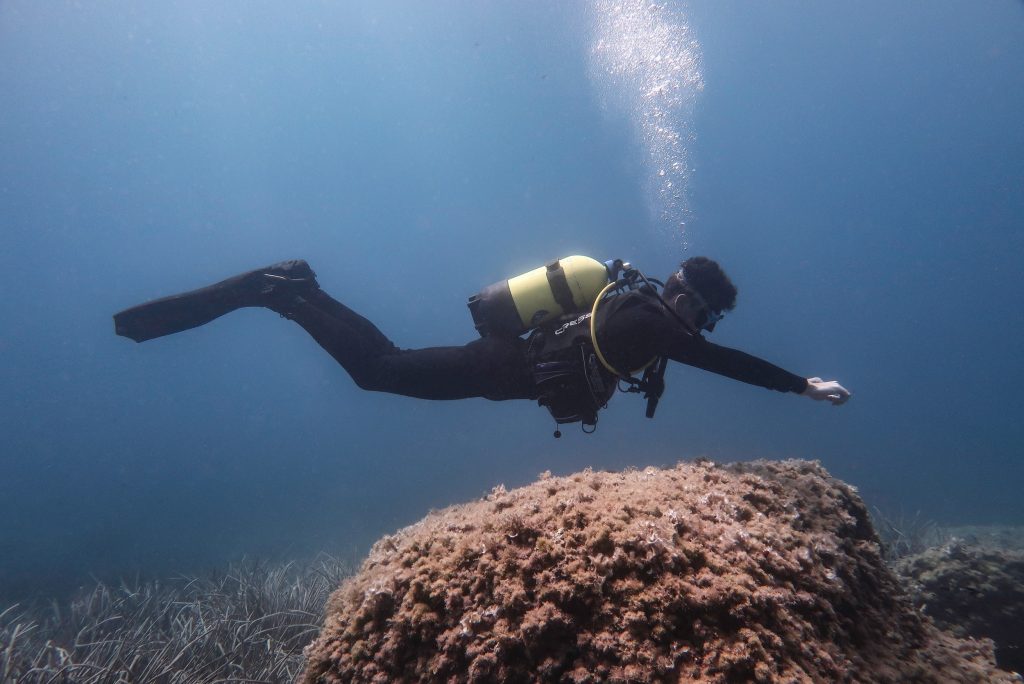
If your fins/legs are too light, your legs will gradually rise, becoming the highest point of your body, and putting you into a head-down position, as shown below.
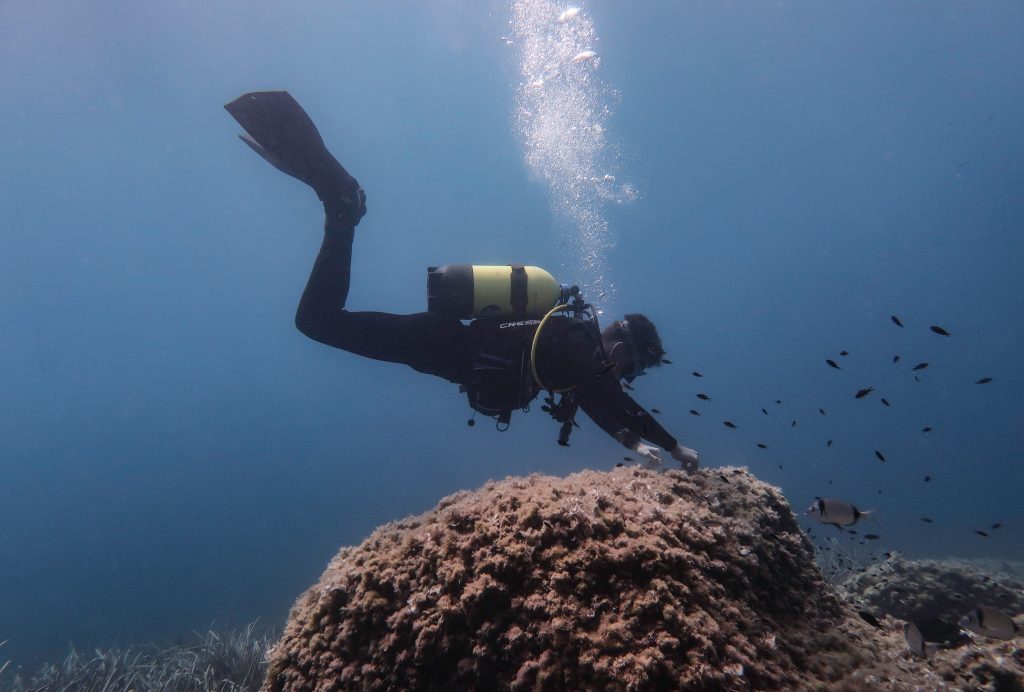
Conversely, if your fins/legs are too heavy, they will gradually sink, becoming the lowest point of your body, as shown below.
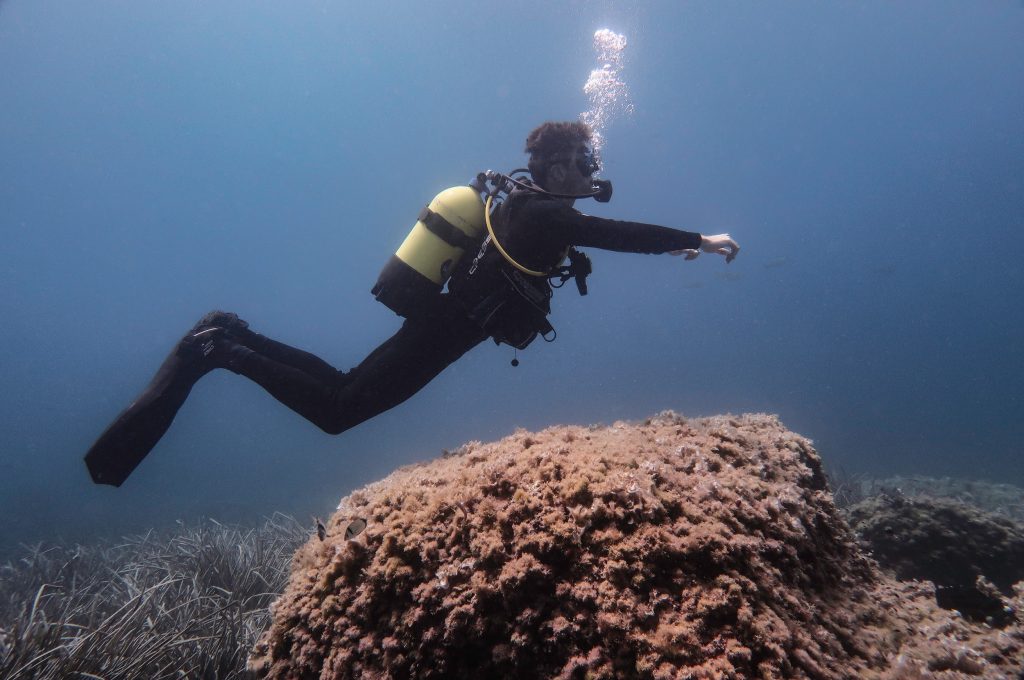
Similarly, if your legs neither rise nor sink excessively, and your body stays roughly 20-40 degrees off horizontal, then you are perfectly trimmed. This is demonstrated below.
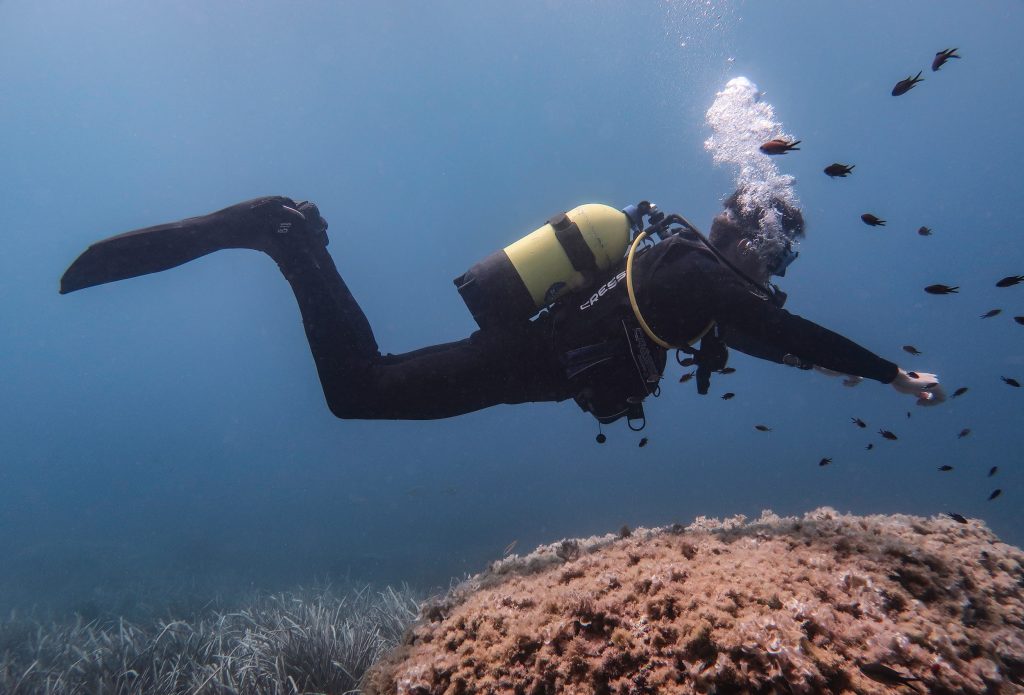
On the other hand, your body may shift to one side, showing an imbalance on the lateral plane, as shown below. In this case, this is due to another affecting factor of trim, such as weight distribution – however, as this article is concerning fin selection, we shall leave this for another time.
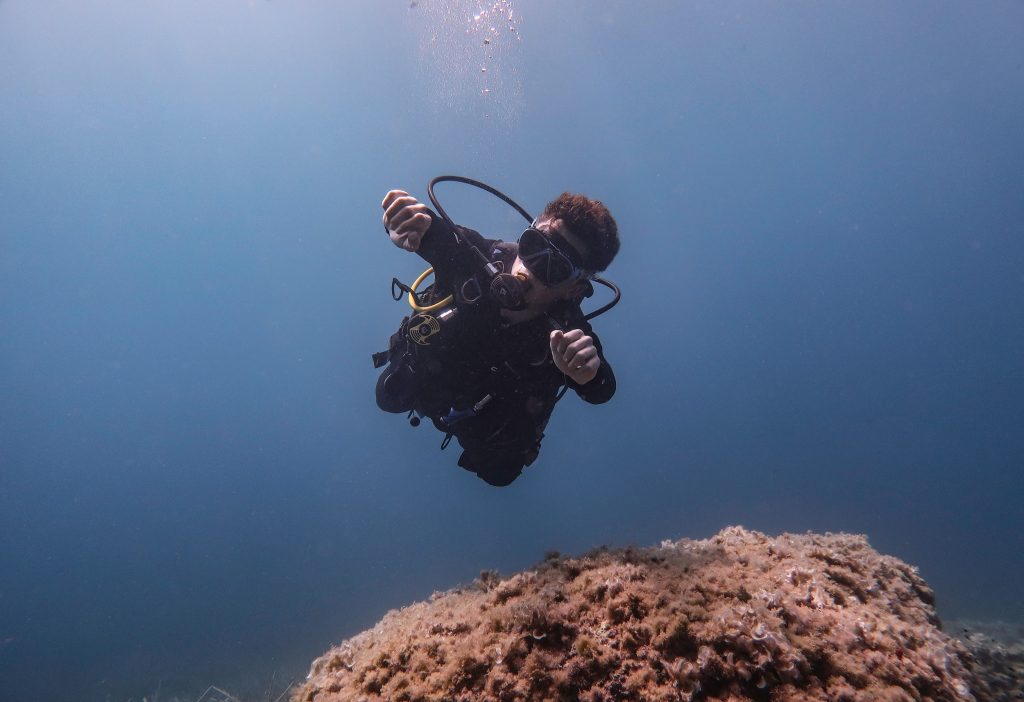
Given the result of this simple in-water trim check, you can now make a more informed decision as to what characteristics you are looking for in a fin. If you suffer from floaty legs, then a fin that is slightly more negative will of course be of top priority, and vice versa. If your current fins already result in a perfectly trimmed in-water position then you will most likely want to look for fins possessing the same weight and material characteristics.
Scuba Fins in a Whole-Body Context
We have, hitherto, considered fin selection from a perspective of propulsion, and a perspective of trim. The third consideration, intertwining the previous two, is how scuba diving fins interact in a whole-body context with the rest of your equipment, and how changing various pieces of equipment changes the desired characteristics of the scuba fins.
Firstly, exposure suits. Drysuit divers tend to be in an on-going battle with floaty feet, especially neophyte drysuit divers. Therefore, a fin with negative buoyancy is often the most desirable option, in order to mitigate this problem. Some divers are apprehensive to dive with a heavier fin, however, it is almost always better to dive with a fin that is slightly too negative than too positive. This is especially the case for drysuit divers, as it is easy to compensate for any excess negative buoyancy by simply shifting air to the feet until reaching a neutral level. With excessively negative fins, when taking a stroke, you are able to kick backwards and upwards, thereby partly compensating the negative buoyancy whilst maintaining kicking power and finning control. However, with excessively positive fins, this is not possible as you are unable to kick downwards without ascending, as if you kick back and down you will ascend in the water column, and, equally, when you kick backwards your legs will naturally be pulled upwards, thus losing kicking power and finning control.
When it comes to wetsuit diving, fins that are either neutral or even slightly positive tend to be more desirable. That said, however, some divers suffer from floaty legs, regardless of the exposure suit they wear. This tends to be seen especially in those who carry more fat in their legs, as fat floats and muscle sinks.
Secondly, equipment configurations. For twinset divers, the heaviest part of their body tends to be their torso. For those diving in an aluminium twinset, this is even more the case, as the aluminium tanks become positive throughout the dive causing the weight to be concentrated further up their back. Therefore, a pair of negative, or at the very least neutral, fins are the most desirable option, as they will balance out the twinset diver like a seesaw, putting them into perfect trim. Alternatively, for the sidemount diver, the majority of weight is centred on the waist. This causes the hips to sag and, consequently, for the legs to sink. Therefore, a slightly lighter, more positive fin tends to work better in providing perfect trim. Of course, however, you also need to consider what type of exposure protection you will be using with what equipment configuration, as a drysuit sidemount diver will most likely want heavier fins to compensate for the effects of the drysuit, for example.